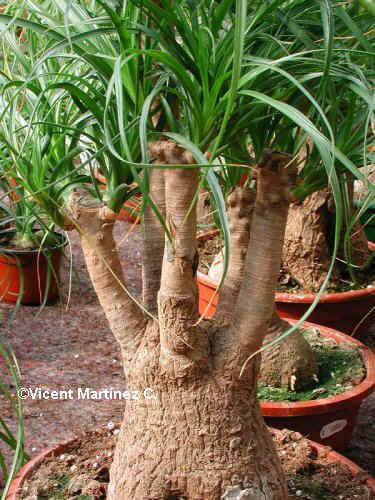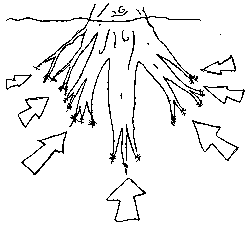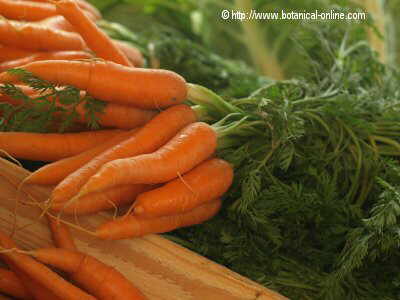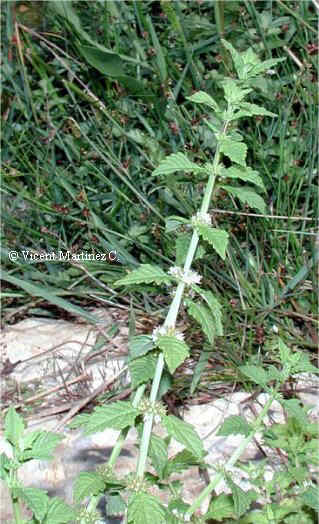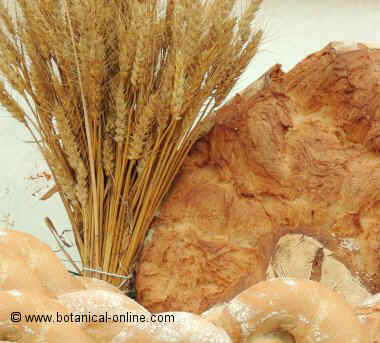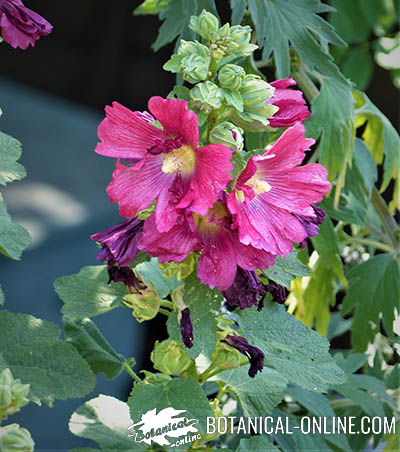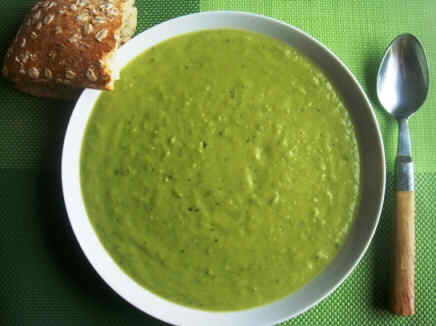Contents
- 1 What is a dragon fruit (Hylocereus undatus)?
- 1.1 Characteristics of dragon fruit
- 1.2 Where to find dragon fruits
- 1.3 Distribution in native countries
- 1.4 Description of the plant
- 1.5 What parts of dragon fruit are used?
- 1.6 Composition of dragon fruit
- 1.7 Composition of Dragon fruit per 100g.
- 1.8 Medicinal components of dragon fruit
- 1.9 Botanical classification of dragon fruit plant
What is a dragon fruit (Hylocereus undatus)?
Characteristics of dragon fruit
Common English name: Dragon fruit, pitaya, pitahaya, Night blooming Cereus, king of the nihgt, Strawberry Pear, Belle of the Night, Cinderella Plant, Jesus in the Cradle
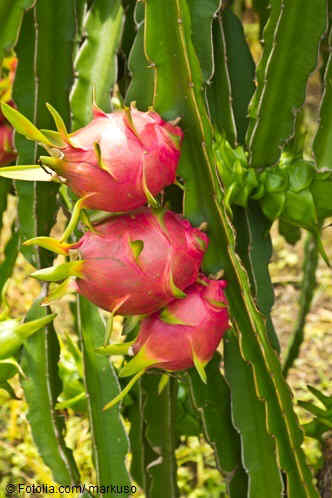
Image of a branch of dragon fruit with fruit.
– Scientific name: Hylocereus undatus (Haw) Brit & Rose.
– Taxonomic synonym: Cereus undatus Haworth Oklahom
– Family: Cactaceae
Where to find dragon fruits
Its origin is unknown. Native to the region between the southwestern United States and Mexico. Introduced in Hawaii in 1830, where it has become naturalized.
It was carried to Vietnam by the French more than 50 years ago, where it has also been naturalized
It can be found in tropical and subtropical America, in evergreen and deciduous forests. It lives from 0 to 2,000m. high.
Distribution in native countries
In appears in South America, southern Mexico, Pacific Coast of Guatemala, Costa Rica, El Salvador, the Caribbean, Bahamas, Bermuda, Vietnam, southern China, Thailand, Australia and Taiwan.
It is currently cultivated in tropical and subtropical regions for the production and marketing of fruit. The major global producers are Mexico, Nicaragua and Israel.
Description of the plant
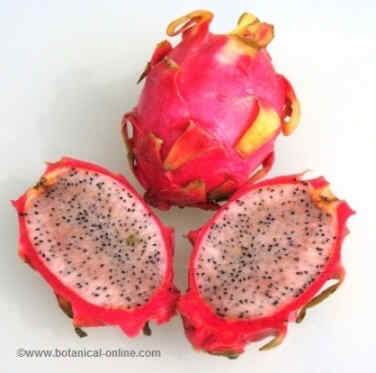
Dragon fruit open transversely
Dragon fruit or pitaya (Hylocereus undatus) is a climbing plant of the cactus family – Cactaceae – growing in tropical and subtropical America.
Dragon fruit is an epiphytic plant, which, as its name suggests, is up trees and branches in the rainforest (etymologically “epi” on and “phytos” plant).
This plant climbs up trees to feed on sunlight and benefits from arboreal humidity and nutrients from the air.
Roots appear on the walls of the stems and intercostal spaces, which allow the plant attach to its stakes (adventitious roots). It is not a parasitic plant, since only uses the stake for support. The underground creeping stems develop roots as a terrestrial plant.
The stems are succulent or fleshy, with a triangular section and up to 5cm. Wide, wavy margins and highly branched. Inside they contain reserves of nutrients and water, which allow the plant to survive in extreme conditions, such as poor soils, low humidity and drought periods.
The stem tissue transpires through stomata, that are small holes in the surface tissue which allow gas exchange. Stomata are closed during the day to prevent water loss; and open overnight to allow the entry of carbon dioxide needed for the plant to perform photosynthesis (specifically, Crassulean Acid Metabolism).
Dragon fruit, as other cacti, is provided with areolas, a sort of bumps, where spines grow. In each areola it has 2 to 5 short acute spines (1-3 cm.) Areolas or buds are able to develop new stems and flowers.
Large, white or pink flowers flowers, 20-35cm. long and 22 – 35cm. wide. Campanulate, tubular amd hermaphrodite.
It blooms at night, with a very fragrant, but the next day flowers fade.
This plant fruit is edible. It is a fleshy, ovoid, rounded and elongated berry, 10 to 15 cm. diameter. Skin is red, purple or yellow, and the surface has leafy bracts or greenish scales.
The pulp is white, red, pink or yellow, with numerous tiny black seeds. They weigh between 200g. to 1kg. having a sweet, slightly sour taste. The fruit harvest occurs from June to September.
What parts of dragon fruit are used?
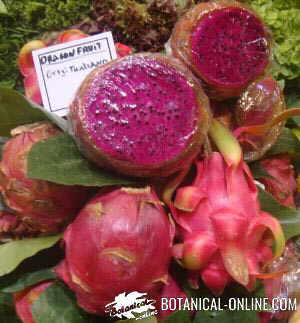
Dragon fruit as sold in the market
The fruits are popular for their use in food. All parts of the plant have different uses:
– Food: is a fruit rich in fiber, vitamin C and iron. Halved to consume, it is served with a spoon, being very common in tropical and subtropical countries.
The juice is a good dressing for fruit salads and other desserts. It is also an ingredient in dye cakes and candies. Suitable for the production of jams and syrups.
Unopened flowers are cooked and eaten as a vegetable.
– Medicinal properties: the plant is used for medicinal purposes. It has components with health effects.
* More information on Dragon fruit properties.
– Ornamental: the whole plant is used as an ornamental plant because of its easy cultivation, to form hanging structures with this beautiful and attractive plant when it blooms and bears fruit.
It is also used in gardening as roots stock for ornamental cactus.
Composition of dragon fruit
The fruit gives us sugar, between 11 and 16%, which are absorbed slowly because of the fiber containing the same fruit. Fiber types are mucilage and pectin, which provides benefits to the intestinal transit.
The fat content is very low. The dragon fruit has little protein, about 1%.
- Oxalates: Hylocereus presents calcium oxalates fruit, like other cacti plants, such as prickly pear cacti (Opuntia ficus-indica).
- Flavonoids: The flowers and fruits of the plant contain flavonoids: kaempferol, quercetin, isorhamnetin and derived compounds.
In case of purple dragon fruit pulp, it also has the benefits of anthocyanins or natural pigments with antioxidant and protective effect for capillary fragility. Purple pigments are especially beneficial for the health of the eyes.
| ||||||||||||||||||
* More information about the nutritional value of “Pitahaya fruit”in the listing below.
Medicinal components of dragon fruit
Dragon fruit contains captin, a substance that works as a cardiac tonic and stimulant of the nervous system.
| ||||||||||||||||||||||||||||
![]() More information on dragon fruit.
More information on dragon fruit.


